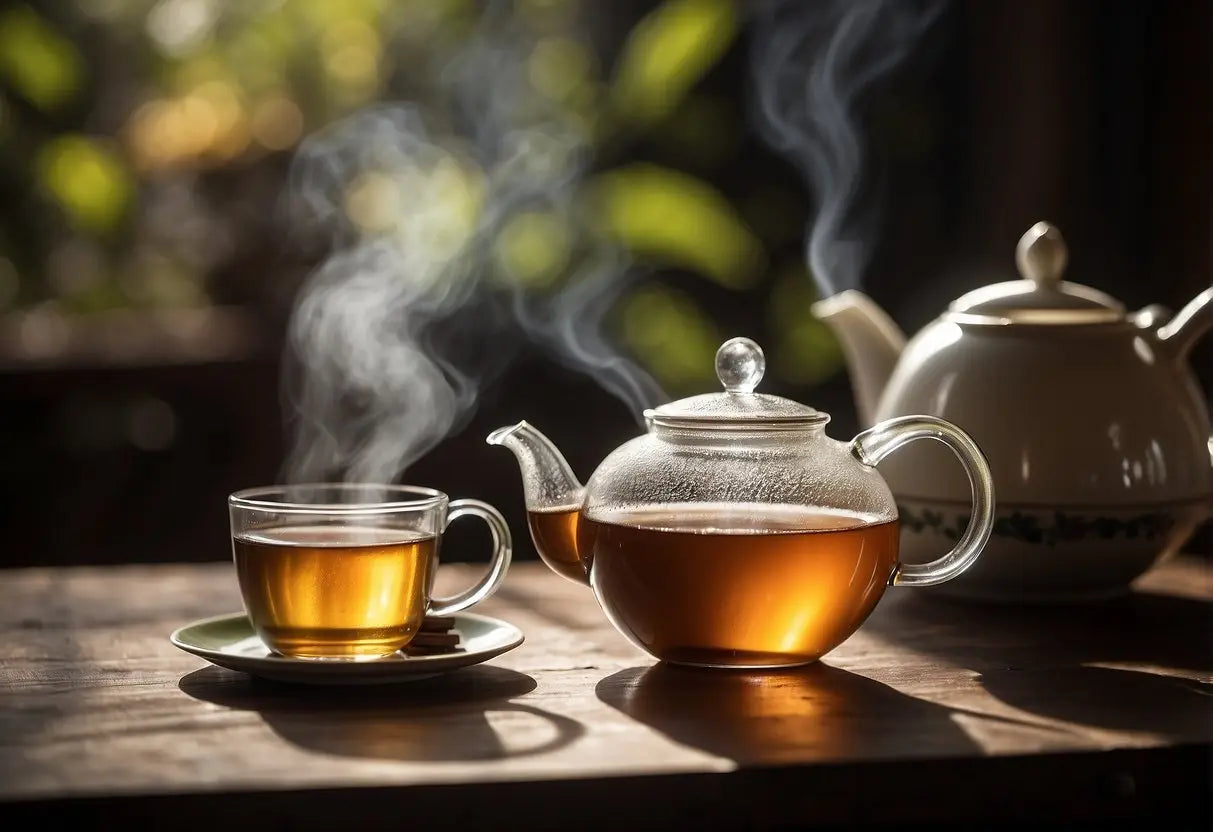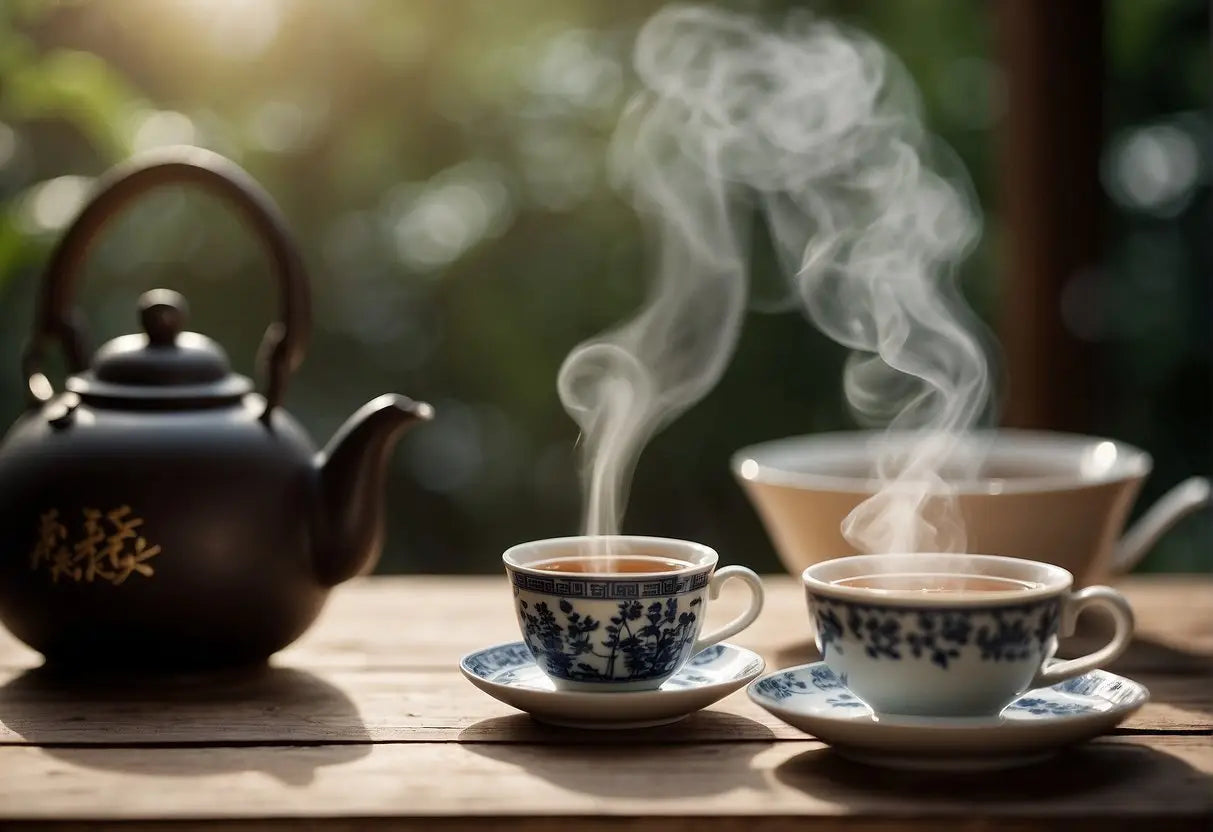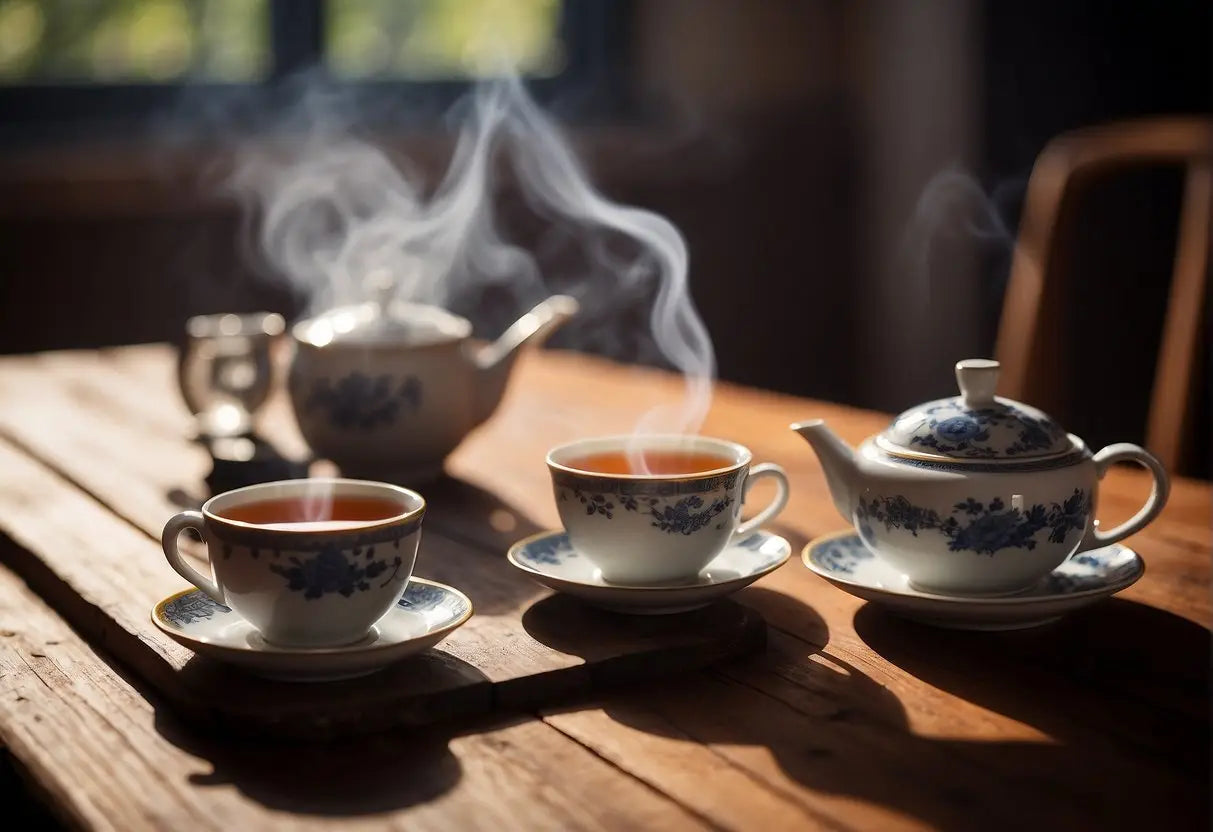How to Drink Pu-erh Tea
Shop our Pu Erh Tea collections!
Pu-erh tea is a unique variety known for its aging process and earthy flavor. It originates from the Yunnan province of China and has been prized for centuries.
History of Pu-erh Tea
Pu-erh tea's origins can be traced back to the Eastern Han Dynasty (25–220 CE), where it was a highly valued commodity along the ancient trade routes, particularly the Tea Horse Road. It served both as a currency and a staple for nomadic tribes, which helped in its distribution and popularity.
Bestsellers
Types of Pu-erh Tea
There are two primary types of Pu-erh tea:
-
Sheng (Raw) Pu-erh: This type undergoes a natural fermentation process over time. It can range from green to golden in color, and its flavor develops and matures over the years.
-
Shou (Ripe) Pu-erh: This variety is fast-tracked in its fermentation through a process of wet piling, resembling composting. Shou Pu-erh has a deep, rich, and earthy flavor profile and is usually darker than Sheng.
Health Benefits of Pu-erh Tea
Your interest in Pu-erh tea may also be due to its health benefits. Some studies suggest that Pu-erh tea can:
-
Support weight loss: It has been noted to help boost metabolism and aid in fat breakdown.
-
Improve gut health: The microbial fermentation process is believed to foster beneficial bacteria in your gut.
-
Reduce cholesterol levels: Certain components in Pu-erh have been associated with a decrease in bad cholesterol and an increase in good cholesterol.
Preparing to Brew Pu-erh Tea
Brewing Pu-erh tea properly enhances its flavor and aroma. Pay careful attention to the teaware you select and the quality of the leaves you choose.
Selecting the Right Teaware
Teapot material: A traditional Yixing clay teapot is often recommended for brewing Pu-erh tea due to its porous nature, which absorbs the tea flavors over time and can enhance subsequent brews.
-
Size: A small teapot (around 100-150 milliliters) is preferable. It allows for a high leaf-to-water ratio, which is key for releasing Pu-erh’s complex flavors.
-
Cups: Use small cups, about 20-30 milliliters, to savor the tea in small quantities.
-
Accessories: You'll also need a tea pitcher (fairness cup) and a strainer to ensure an even flavor distribution and to keep leaves out of your cup.
Lao Ban Zhang
Choosing Quality Pu-erh Tea Leaves
Leaf Appearance: Quality Pu-erh tea leaves are typically whole, intact, and consistent in size. If your Pu-erh is pressed into a cake or brick, the leaves should not crumble excessively when chipped off.
-
Aroma: Prior to brewing, good quality Pu-erh will have a pronounced earthy aroma. Avoid leaves if they have any off-putting smell.
-
Age: Pu-erh tea is unique in that it ages and its flavor profile develops over time. Look for the production date; aged Pu-erh is often more prized, but younger Pu-erh can also offer a delightful tasting experience.
Remember, your choice of teaware and tea leaves are critical steps in the preparation process for brewing Pu-erh tea. Each contributes to the final flavor and should be selected with care.
Brewing Pu-erh Tea

To achieve an authentic Pu-erh tea experience, precise technique is key, from rinsing the leaves to managing steeping time. Here's how to do it right.
Rinsing the Leaves
Rinse your Pu-erh tea leaves to remove any dust and awaken their flavors. Pour hot water over the leaves, swirl for a few seconds, and then quickly discard the water. This step is especially crucial for compressed Pu-erh cakes, as it helps to soften the leaves.
Mastering Water Temperature
For optimal brewing, the water temperature should be just below boiling, at approximately 95°C (203°F). Use a thermometer to check the temperature, as water that is too hot can scorch the leaves, altering their complex flavors.
Steeping Time Guidelines
Different ages and forms of Pu-erh require varying steeping times. Here's a brief guide:
- Young Raw Pu-erh: 1st steep for 20 seconds, adding 10 seconds for subsequent steeps
- Aged Raw Pu-erh: 1st steep for 30 seconds, adding 10-15 seconds for subsequent steeps
- Ripe Pu-erh: 1st steep for 10-15 seconds, adding 5-10 seconds for subsequent steeps
Begin with these guidelines and adjust to your taste preference. Remember, Pu-erh can be re-steeped multiple times, with each steeping revealing new dimensions of flavor.
Serving Pu-erh Tea

When serving Pu-erh tea, the focus is on the traditional brewing method and the nuanced pairing with food that compliments its deep flavors.
Serving Techniques
Pre-warm your teaware: Begin by pouring hot water into your teapot and cups to pre-warm them. This step prepares your utensils for optimal tea serving and ensures the tea maintains its temperature.
Measure the tea: Use about 5 grams of Pu-erh tea for a 150 ml teapot.
Rinse the leaves: Briefly wash the Pu-erh tea leaves with boiling water and then discard this water. This step cleans the leaves and helps to open them up for a full release of flavor.
Steep the tea: Pour hot water over the leaves and allow them to steep. For raw Pu-erh, steep for about 20-30 seconds. For ripe Pu-erh, steep for about 10-20 seconds. After the first steep, increase the steeping time by several seconds for each subsequent infusion.
Serve: Pour the tea into cups through a strainer in a continuous motion to ensure even strength.
Pairing with Food
Complement the flavor: Pair Pu-erh tea with dishes that complement its earthy and sometimes sweet or smoky notes.
Suggested pairings:
- Dim sum or steamed buns
- Rich desserts like chocolate or cheesecake
- Spiced or barbecued meats
Remember to consider the intensity of the Pu-erh you are serving; stronger Pu-erh teas can stand up to richer flavors.
Pu-erh Tea Storage and Aging
Storing and aging Pu-erh tea properly can significantly enhance its flavors and value. The following subsections will provide specific insights into the ideal storage conditions and techniques to age Pu-erh tea effectively.
Proper Storage Conditions
Temperature: Maintain a consistent temperature between 20-25°C (68-77°F). Fluctuations can harm the tea's aging process.
Humidity: Aim for a relative humidity of around 60-70%. Hygrometers can be used to monitor environmental humidity.
Ventilation: Ensure good air flow in the storage area, but avoid direct exposure to strong smells, as Pu-erh can absorb odors.
Light: Keep your Pu-erh away from direct sunlight, which can degrade its quality.
Aging Process and Techniques
Storage Type:
- Loose Leaf: Store in a porous container like a clay jar or wooden box.
- Compressed: Keep in paper or breathable fabric to allow air exchange.
Time Frame: Pu-erh tea can be aged for decades. Taste periodically to appreciate evolving flavors.
Rotation: Every few months, rotate your teas to ensure even exposure to storage conditions.
Drinking Pu-erh Tea

To fully appreciate pu-erh tea, focus on the nuances in flavor and aroma, and embrace the tea-drinking experience with presence and mindfulness.
Sipping and Tasting Notes
When sipping pu-erh tea, pay attention to the initial flavor, body, and aftertaste. Start with a small sip to let your palate adjust to the complexity. Note the first impression – it might be earthy, floral, or woody. As the tea washes over your tongue, observe the body, which refers to the tea's weight and feel in your mouth – pu-erh is often smooth and rich. Lastly, be aware of the aftertaste or finish, which is the taste left behind; quality pu-erh can have a lingering sweetness known as hui gan.
- Initial Flavor: Earthy, Floral, Woody
- Body: Smooth, Rich
- Aftertaste: Lingering Sweetness (hui gan)
Mindful Drinking Practices
Approach your tea-drinking session with mindfulness to enhance your experience. Begin by eliminating distractions; turn off devices and find a quiet space. See and smell the tea before you taste it, appreciating its color and aroma. As you drink, take a moment between sips to breathe and let the experience settle. This allows you to connect more deeply with the flavors and sensations of the pu-erh tea.
- Turn off devices and minimize distractions
- Observe tea's color and aroma
- Breathe and reflect between sips
Frequently Asked Questions

Explore the nuances of enjoying Pu-erh tea with these common inquiries tailored to your interest and well-being.
What are the steps to properly brew Pu-erh tea?
Begin by rinsing your Pu-erh cake with boiling water to remove any dust and open up the leaves. Steep the tea in water just off the boil, around 200°F, for 15 to 30 seconds for the first brew and increase the steeping time for subsequent brews to your taste preference.
Can Pu-erh tea be consumed for weight loss purposes and if so, when is the optimal time?
Yes, Pu-erh tea may support weight loss due to its potential to boost metabolism. For best results, drink it an hour after meals to help with digestion and fat burning.
Is it safe to drink Pu-erh tea on an empty stomach, particularly in the morning or at night?
While Pu-erh tea can be calming, it's not advisable to drink it on an empty stomach because it might cause stomach upset or acidity. It's best enjoyed after meals.
What are the recognized health benefits associated with drinking Pu-erh tea?
Pu-erh tea is attributed with a number of benefits, including aiding digestion, reducing cholesterol levels, and potentially supporting cardiovascular health. Its antioxidant properties may also help in reducing free radicals in the body.
Are there any potential side effects linked to regular consumption of Pu-erh tea?
Regular consumption of Pu-erh tea is generally safe. However, due to its caffeine content, overconsumption can lead to sleep disturbances, nervousness, or palpitations in sensitive individuals.
Is it appropriate to add milk to Pu-erh tea, and how does it affect the traditional flavor profile?
Adding milk to Pu-erh tea is not traditional, and it can mask the complex flavors and diminish its subtle earthiness. If you prefer a milder taste, you may experiment by adding a small amount, but for the authentic experience, try it without any additives.
← Older post Newer post →











